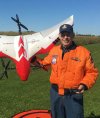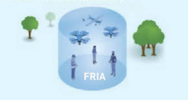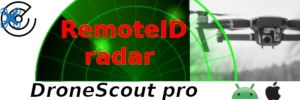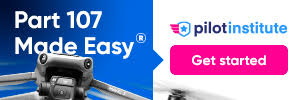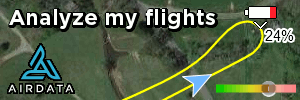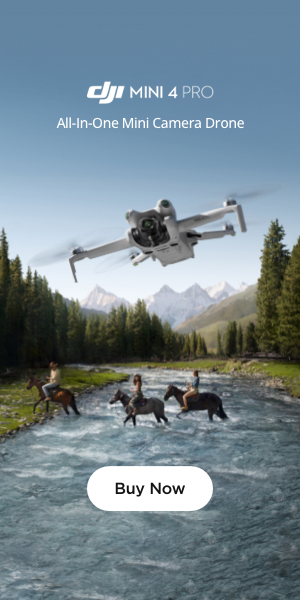You are using an out of date browser. It may not display this or other websites correctly.
You should upgrade or use an alternative browser.
You should upgrade or use an alternative browser.
The License Illusion! Why Airmanship Demands More than a License.
- Thread starter The Droning Company
- Start date
Thank you for sharing your insight. Your perspective pushed me to think about parts of this work that I hadn’t fully considered. I appreciate the experience behind your words and the way you framed the responsibility we carry as pilots. It gave me a lot to reflect on.
Prospect62
Member
Great article and very true. Like many other once-proud American trades, skills and specialties, airmanship is being watered down by technology.
hank970
Well-Known Member
How many of you would support a practical "driving" requirement as part of the Part 107 licensing process? Private pilots need to log many hours in the cockpit with an instructor and then solo and complete a cross-country flight before getting their wings. Commercial pilots have to jump though many more hoops, including many simulator exercises to learn how to manage a variety of complex emergency situations.
Even teeny-boppers, in addition to passing a written test and eye exam, need to remember to fasten their seatbelts, successfully drive around the block or negotiate a cone-course without a mishap, and demonstrate that they can parallel park before they can get a license to drive a motor vehicle.
Given that recreational pilots are governed by the same regulations as Part 107 licensees, what sets the two categories apart? Flying skills? Familiarity with the regulations? Attitude? Part 107 licensees are required to pass an examination covering a lot of topics which aren't even remotely applicable to drone operations, and recreational pilots aren't. That's it. Passing the test, of course, enables Part 107 pilots to engage in business/commercial activities. But, since both categories of pilots must adhere to the same regulations and share the same airspace, aren't the safety concerns and risks associated with commercial and recreational drone operations essentially identical?
Airmanship? The right stuff? Prove it.
Even teeny-boppers, in addition to passing a written test and eye exam, need to remember to fasten their seatbelts, successfully drive around the block or negotiate a cone-course without a mishap, and demonstrate that they can parallel park before they can get a license to drive a motor vehicle.
Given that recreational pilots are governed by the same regulations as Part 107 licensees, what sets the two categories apart? Flying skills? Familiarity with the regulations? Attitude? Part 107 licensees are required to pass an examination covering a lot of topics which aren't even remotely applicable to drone operations, and recreational pilots aren't. That's it. Passing the test, of course, enables Part 107 pilots to engage in business/commercial activities. But, since both categories of pilots must adhere to the same regulations and share the same airspace, aren't the safety concerns and risks associated with commercial and recreational drone operations essentially identical?
Airmanship? The right stuff? Prove it.
Chip
Well-Known Member
- Joined
- Sep 11, 2017
- Messages
- 2,186
- Reactions
- 2,708
Felix le Chat
Well-Known Member
Interesting article. But written from what viewpoint?
The majority of drone fliers (I object to the term 'pilot'... because none of us are) are never in a position to fly in a similar manner to light or commercial aircraft pilots, where there is the potential for encountering other powered flights.
First of all: I'm pretty sure that's why there's a 100' buffer zone between the lower operational altitude of privately owned light aircraft and the max AGL regulation for standard drone operation, so the likelihood of encountering other non-drone air traffic should be negligible (apart from idiots on both sides of the fence)
Secondly, BVLOS (apart from similar idiots) is restricted to certified operations and should not be in the purview of any non-commercial drone operator.
Thirdly, most drone flights (photographic or video) are usually limited to a self-restricted range and altitude commensurate with achieving the necessary shots and are not linear 'point a to point b' jaunts requiring both take off and landing clearance from different ATM controllers. They do not require radio skills, the ability to read sectional maps, or any of the other disciplines required by 'traditional' pilots.
Flying a camera drone is in no way comparable to flying a light aircraft... or even flying a large fixed wing drone BVOLS and above 400' AGL. The established Aviation Authority quadcopter rulebook states simply "...keep out of the way of real aircraft flown by real pilots.." Which is both fair enough and eminent common sense.
The question is simple. Who gains from convincing drone fliers that they absolutely need to be trained and certified to a similar level to 'proper' pilots when they'll never be treated with equality? The answer is just as simple - the individual who is offering the 'accredited' training courses.
Thanks for Sharing the Article. I do not consider myself a drone pilot, but rather a Drone Operator, the word Pilot should not even be in the course materials for Part 107, nada. Basic Drone Operation is rather simplistic, but it comes with a responsibility to the Safe Operation of and Situational Awareness, it actually becomes a practice, in which skills , situational awareness and accumulating flight time ( and a few mistakes ) is our teacher.
It is unfortunate, there will always be a few to ruin our joy of Drone Flying.
It is unfortunate, there will always be a few to ruin our joy of Drone Flying.
Similar threads
- Replies
- 0
- Views
- 341
- Replies
- 6
- Views
- 918
- Replies
- 11
- Views
- 901
- Replies
- 3
- Views
- 1K
- Replies
- 15
- Views
- 1K
DJI Drone Deals
New Threads
-
Recommendations for Recreational Flights Near Cartagena, Colombia
- Started by Johndel
- Replies: 0
-
-
Air 3 The Wallace Monument (in pictures)
- Started by Coconut Island Drones
- Replies: 2
-
-
Members online
Total: 3,561 (members: 15, guests: 3,546)




